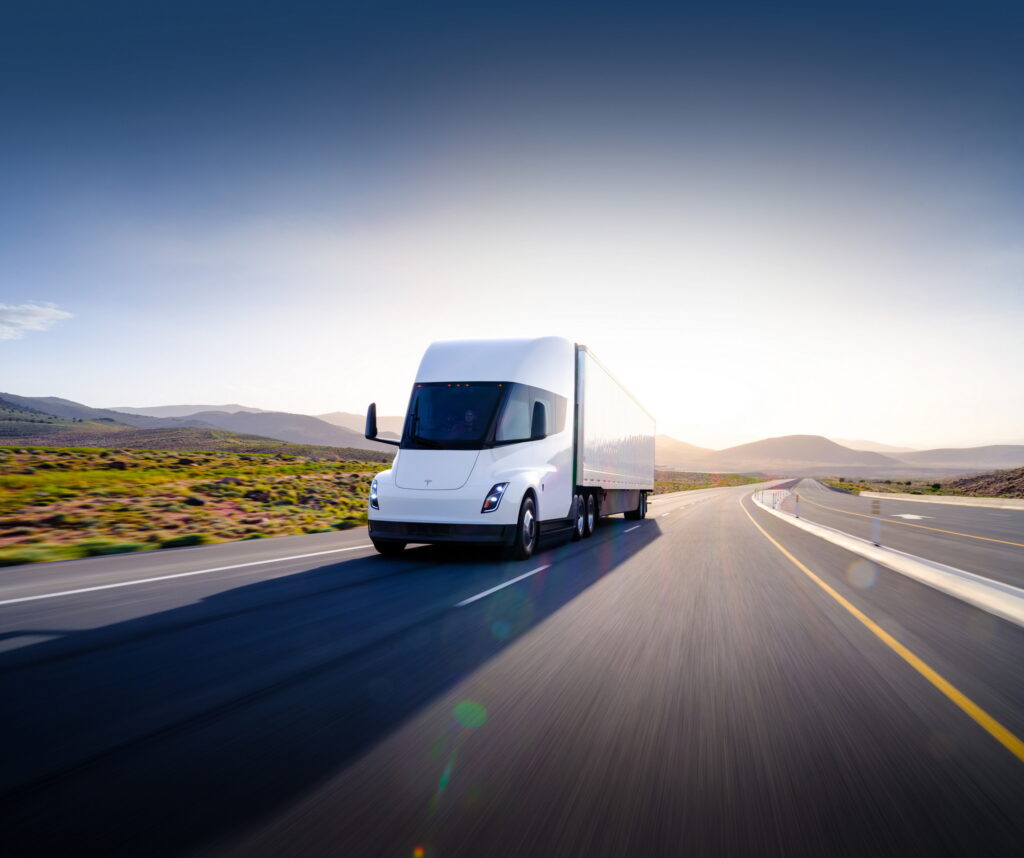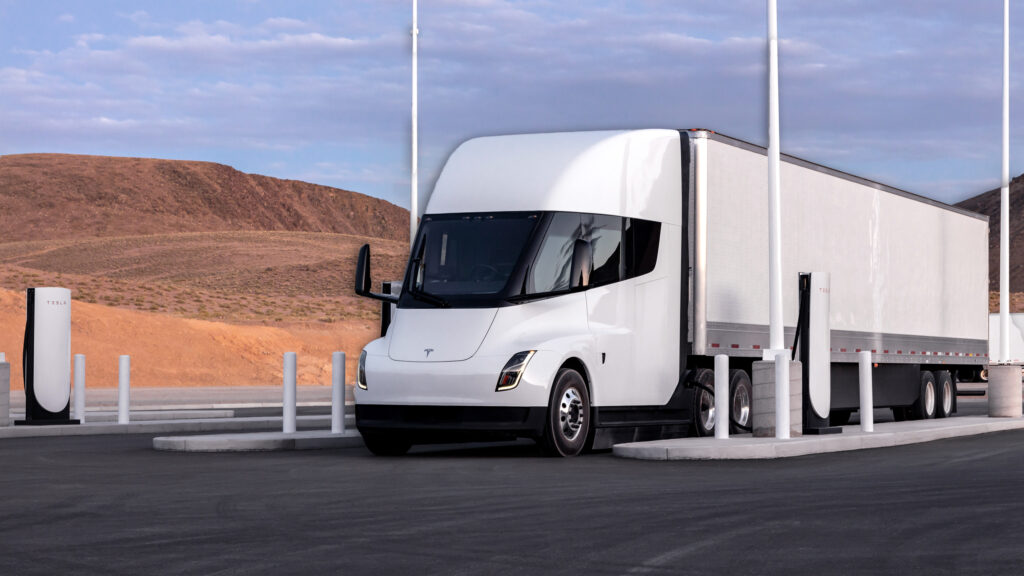This year, the North American Council for Freight Efficiency is putting on what it calls the Run On Less Electric Depot. It gathers real-world data from 10 different electric freight vehicles and then uses it to figure out how to make a transition to electrification more seamless. Over the first couple of days, we’ve learned quite a bit about the Tesla Semi’s range.
It’s been nearly a year since Tesla began deliveries of the Semi and even now it hasn’t fully released all of the details on the big rig. Important details like how big is the battery, what is the actual maximum range, and how much power it makes are all still unknown. That’s why this new independent testing is so interesting.
Tesla initially said that the Semi would have a 500-mile (805 km) range and that it would use just two kWh of energy per mile. This data from NACFE indicates that indeed, under the right conditions, the Semi can very likely hit 500 miles of range on a single charge.
More: Project ICEBreaker Coming As The Anti-Tesla Semi

The Run On Less Electric Depot takes place over 18 days and just two days in, the three Tesla trucks involved are scoring high marks. On day one, truck one went 416 miles (670 km) and ended its day with just over 18 percent state of charge. On day two, it went 406 miles (654 km) but finished with just over seven percent of battery capacity left.
Truck two went 376 miles (605 km) on day one and finished with just over 15 percent battery life. On day two it went just 223 miles (359 km) but finished with nearly half of its range intact at 48 percent battery. The biggest single day for any of the trucks came on day one for truck three.
It went 545 miles (877 km) but did require a charge mid-way after depleting almost all of its battery after 377 miles (607 km) . Day two for the third Tesla Semi went well too with a touch over 18 percent battery left after a 410-mile (660 km) journey. All of this seems to indicate that at least for single-day trips, the Tesla Semi is a sincerely capable freight-hauling machine.
It’s important to note that many factors including temperature, elevation, traffic, and more can affect range for good and for bad. In addition, while this test does include 10 different teams, it wouldn’t be fair to compare one to another since none are running the same routes much less with the same freight and stops.




